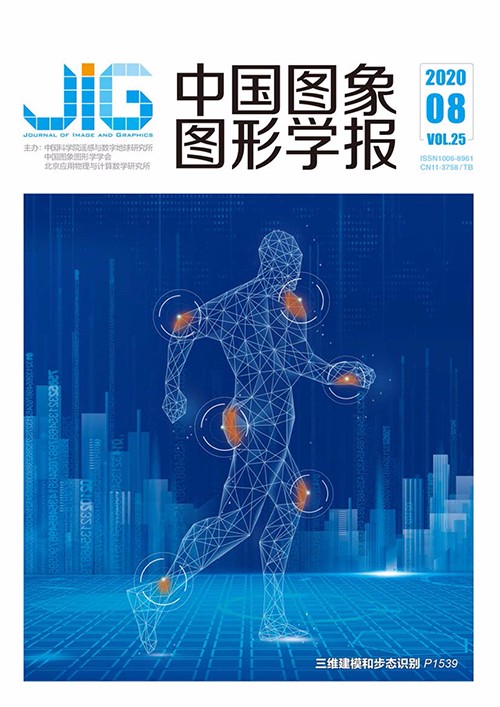
车路视觉协同的高速公路防碰撞预警算法
摘 要
目的 基于视觉的前车防碰撞预警技术是汽车主动安全领域的一个重要研究方向,其中对前车进行快速准确检测并建立稳定可靠的安全距离模型是该技术亟待解决的两个难点。为此,本文提出车路视觉协同的高速公路防碰撞预警算法。方法 将通过图像处理技术检测出来的视频图像中的车道线和自车的行驶速度作为输入,运用安全区实时计算算法构建安全距离模型,在当前车辆前方形成一块预警安全区域。采用深度神经网络YOLOv3(you only look once v3)对前车进行实时检测,得到车辆的位置信息。根据图像中前车的位置和构建的安全距离模型,对可能发生的追尾碰撞事故进行预测。结果 实验结果表明,重新训练的YOLOv3算法车辆检测准确率为98.04%,提出算法与马自达CX-4的FOW(forward obstruction warning)前方碰撞预警系统相比,能够侧向和前向预警,并提前0.8 s发出警报。结论 本文方法与传统的车载超声波、雷达或激光测距的防碰撞预警方法相比,具有较强的适用性和稳定性,预警准确率高,可以帮助提高司机在高速公路上的行车安全性。
关键词
Freeway anti-collision warning algorithm based on vehicle-road visual collaboration
Cai Chuangxin1,2, Gao Shangbing1,2, Zhou Jun1, Huang Zihe1(1.College of Computer and Software Engineering, Huaiyin Institute of Technology, Huai'an 223001, China;2.Laboratory for Internet of Things and Mobile Internet Technology of Jiangsu Province, Huai'an 223001, China) Abstract
Objective The unceasing progress in China's economy and urbanization has caused the increase in internal expressway mileage and automobiles, and this situation leads to concern on traffic jam among Chinese people. In view of the increasing requirements for safe driving by operators, autonomous driving techniques have attracted widespread attention from domestic and foreign scholars. However, automotive active safety techniques remain in the stage of R&D and testing in China. Many problems, such as few practical products, low-precision safety distance model (SDM), difficulty in obtaining key parameters, and disregarding drivers' characteristics, exist. Corresponding research is accordingly necessary. The vehicle-road visual collaboration technology, which is the core technology for the field of automotive active safety, is applied reasonably to anti-collision early warning systems. Compared with ultrasound, laser, and radar, the technology has the following advantages:the collected vehicle-road parameter information is more abundant, no perceived blind zone exists, the state of dangerous vehicles is dynamically predicted, it is not restricted by view block, and it is more affordable and suitable for the human eye's information capture habits. The rapid and accurate detection of preceding vehicles and the establishment of a stable and reliable SDM are two difficulties. To overcome these problems, a freeway anti-collision-warning algorithm based on vehicle-road visual collaboration was proposed. Method The environment was sensed through the driving recorder. The road lane line, the vehicle speed, and the position of the vehicle in front were combined to realize the anti-collision warning. The algorithm mainly includes three parts, namely, the construction of an SDM, the lane detection based on you only look once v3(YOLOv3), and the anti-collision-warning algorithm based on the visual collaboration of the road. A real-time calculation method for the safety zone was proposed to construct an SDM between the current and preceding vehicles. The lateral distance of the safety zone was obtained by detecting and fitting the mathematical model of the lane line. A speed detection algorithm was proposed to calculate the current vehicle's driving speed based on video images. The longitudinal distance of the safety zone was obtained through the current vehicle's driving speed and the driver's behavioral and perceptual response characteristics. The early warning area of the safety zone was constituted through the horizontal and vertical distances between lane lines. SDM was built using the safe area real-time calculation algorithm to form an early warning safety zone in front of the current vehicle. The deep neural network YOLOv3 was used to detect preceding vehicles in real time for obtaining the location information of the vehicle. After the input image was detected with YOLOv3, the category where the object belongs to and the coordinate information of the object were predicted. The lower-right (or lower-left) coordinates of the bounding box of the vehicle was used to improve the accuracy of the early warning. The real-time calculation technology of the safety zone and the results of lane-line tracking were combined through the vehicle-road visual collaborative algorithm to build a safety early warning area on the road that changes with the vehicle speed in real time. The coordinate information of the vehicle in a video was obtained using YOLOv3. Different tips depending on where the vehicle was in the video were given through the anti-collision-warning algorithm based on vehicle-road visual collaboration. Result The proposed method was tested and evaluated on the video captured by a driving recorder, which was acquired from a passenger transportation company in Huai'an. The sequence of the test video was Test_1 to Test_20, and these video sequences contained different highway driving environments that can effectively verify the pros and cons of the algorithm. Vehicle detection experiments were performed on a desktop computer with an NVIDIA GeForce GTX 1070TI GPU. The collision-warning experiment was performed on a Mazda CX-4 with millimeter-wave radar and a laser rangefinder. The test section was Changshen Expressway. The experiments showed that the vehicle detection accuracy of the retrained YOLOv3 algorithm is up to 98.04%. Compared with the forward obstruction warning system of Mazda CX-4, the proposed algorithm can achieve side and forward warning, and an alarm is issued 0.8 s in advance. Although the proposed method demonstrates a good result in terms of detection speed, accuracy, and collision early warning, the construction of SDM can still be further improved compared with other algorithms because the research on the lane-line detection is limited on a good weather. Further research will be conducted in the case of poor visibility, such as rain, fog, and night. Conclusion Compared with the traditional anti-collision-warning method based on vehicle ultrasound, radar, or laser ranging, the proposed method can effectively improve the accuracy of early warning and better guarantee the driving safety on expressways. The algorithm has four advantages. First, progressive probabilistic Hough transform combined with morphological filtering, which had good robustness to interference noise and high detection accuracy, was proposed to detect lane lines. Second, real-time computing technology of safety zone, which considered the behavioral and intuitive response characteristics of drivers and was in line with the real driving situation, was proposed to construct SDM. Third, theYOLOv3 target detection algorithm was used to realize single-category detection, which further improved the video frames to reach 43 frame per second with guaranteed accuracy. Finally, the vehicle position information and road SDM were considered, and an anti-collision warning algorithm based on vehicle-road vision coordination was proposed. This advantage effectively improved the accuracy of vehicle warning and ensured the driving safety of drivers.
Keywords
forward anti-collision warning safety distance model(SDM) lane detection vehicle real-time detection you only look once v3(YOLOv3)
|



 中国图象图形学报 │ 京ICP备05080539号-4 │ 本系统由
中国图象图形学报 │ 京ICP备05080539号-4 │ 本系统由